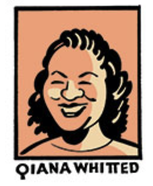|
Originally posted at Pencil Panel Page.
This year’s International Comic Arts Forum will include a roundtable discussion on collaboration in comics that considers the way academics and industry professionals approach the dialogic qualities of creation in the industry (look for a panel of original papers addressing this topic at MLA 2014 as well). The discussion grows out of a concern that comics scholars too often privilege the authorship of a lone gifted writer, potentially “ignoring the historical importance and artistic potential of multi-authored comics.” So I thought I would bring the question to PPP readers as well. Why don’t we give the collaborative aspects of comics more serious attention? What are the risks and/or advantages that come from talking about these texts as a medley of complementary, diverging, or competing interests rather than a single creative vision? The issue has become especially important to my own research over the last few years. When I initially ventured into comics studies as a literary critic, I often found myself attributing primary “ownership” of the narrative to the writer with the penciller, inker, colorist, letterer and editorial staff receiving only a mention. Much of the academic comics scholarship that I encountered reinforced this view, as do the prestigious awards and “best of” lists that often champion the single artist/writer. (No wonder Eddie Campbell is under the misconception that “the literaries” ignore the narrative drawings in comics and consider only the plot.) In my work on the 1980s Swamp Thing run, however, I found that this approach did not suit me well and I tried to do my best to be more attentive to the role of collaboration between Alan Moore, Stephen Bissette, and John Totleben in the finished product. |
AboutAn archive of my online writing on comics, literature, and culture. (Illustration above by Seth!) Categories
All
Archives
July 2020
|


 RSS Feed
RSS Feed